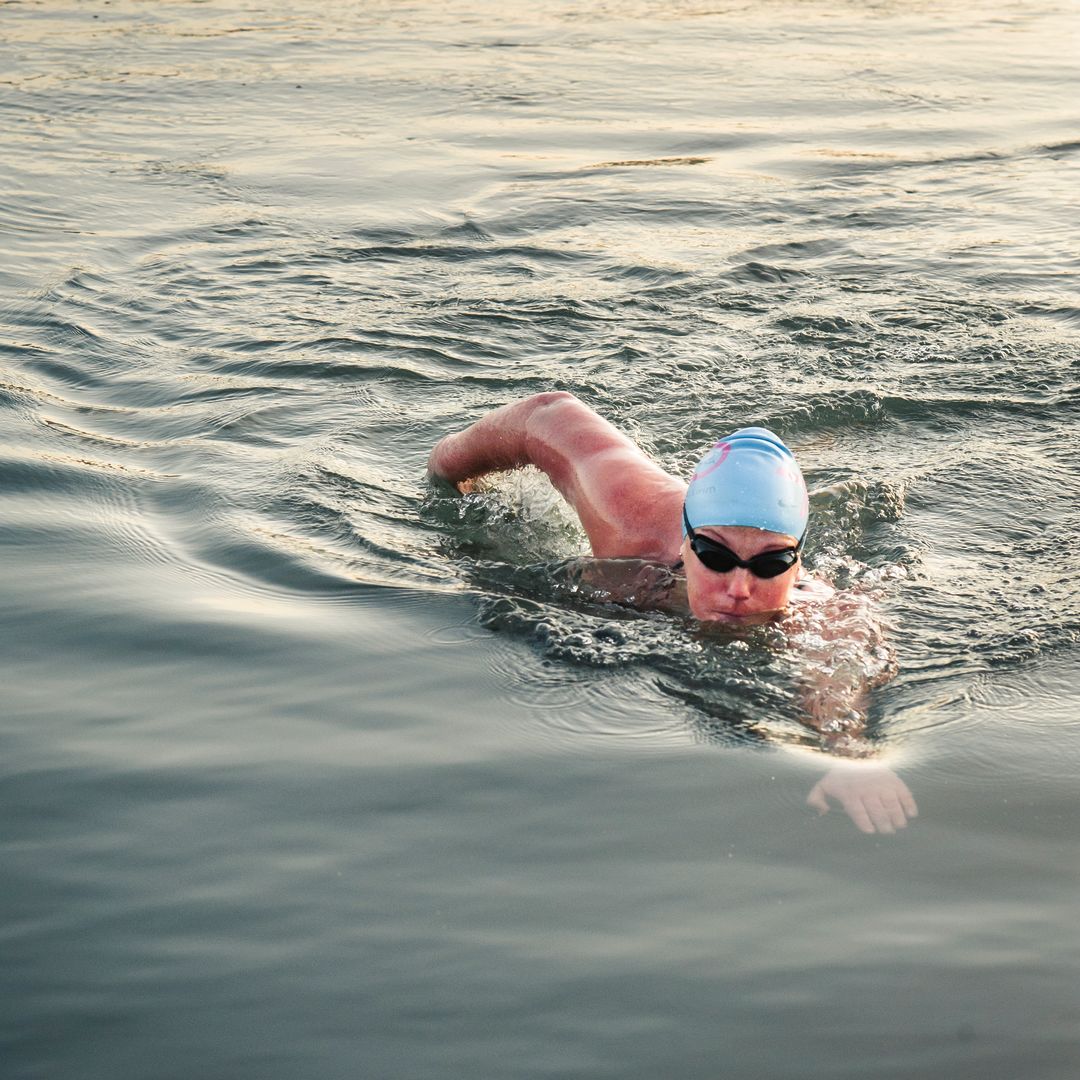Endurance Swimmer Michelle Macy Sets Out to Paddle from Ireland to Scotland—Again

Image: Aubrie Legault
For an athlete dedicated to an esoteric sport, Michelle Macy can provide a pretty succinct description of her pursuit: “You swim a lot.” Yes. Over the past decade, the Nike employee has taken on the longest, toughest open-water swims on the planet: challenges like the 28.5-mile Manhattan Island Marathon Swim (a counterclockwise circuit around Gotham), or Japan’s 12-mile Tsuguru Channel. Her first? The sport’s equivalent of Mount Everest: the 21-mile English Channel crossing, with its chilly 64-degree water and teeming jellyfish. As she trains to swim from Ireland to Scotland (again), the 39-year-old Beavertonian offers an immersion course in passion.
I’m considered a traditional open-water marathon swimmer, which means I adhere to the English Channel Swimming Rules: no specialized wetsuit, you can’t touch the boat, they can’t touch you. You start from land and you finish on land. (In the English Channel, you jump off the boat, walk up to the shore, and then you start.) You hire a boat pilot, an observer on board makes sure you follow the rules.
My parents put me in competitive swimming when I was 9 in Minnesota, and I swam all through college. When I moved to Oregon in 2005, the one way I knew to meet like-minded people was to meet swimmers. I also went through the new-employee orientation at Nike, and one of the questions was, if you had all the time in the world, what would you do? I didn’t even really think about it, but I wrote down, “Swim the English Channel.”
I called a boat pilot, and he had a slot 16 months later. I paid him. And then I thought, well, I should probably swim more than two hours a week.
I swam the Channel in September 2007. I hated it, and I loved it. And when I was crawling, running, laughing, crying on to the beach in France, I knew I wanted to feel that way again.
I’ve now done the Triple Crown of marathon swimming—the English Channel, the Catalina Channel, and the Manhattan Island Marathon Swim. I was the first American and second woman to do all the swims considered part of the Ocean Seven. In July, I’m hoping to go back to the North Channel, between Northern Ireland and Scotland. It’s 21 statute miles, the same distance as the English Channel—but with colder water and more jellyfish. I’m going back because I love the people and my boat pilot there, and because it’s known as the toughest within the Ocean Seven.
It’s not a spectator sport. The English Channel takes about 14 hours on average, and it’s not like there’s a news crew following you. How’s Michelle doing now? She’s still swimming. And it all looks the same. You don’t talk to people. My friends who’ve been crew say it’s very dramatic. But the first question from people not familiar with the sport is always, OK, what about the sharks?
Afterwards, your skin peels off. Your tongue peels—some people call it brain tongue, because your tongue looks like brain coral. The tongue, thankfully, heals pretty quickly. In the North Channel, you get stung so bad by jellyfish it takes six weeks or so to recover.
As what the doctors call an “aging athlete,” I can’t train like I did in college. I do four to five swims a week (in pools), with long swims on the weekend: 600 miles a year, mostly from March through October, and probably 20 to 30 hours a week.
For me, it’s where I feel the most literally and figuratively stripped down, and the most like myself. You really have to get to know yourself. You get to talk to yourself for 14 hours. Being in the water, it’s hard to feel like you’re the top of the food chain. You’re part of this whole magnificent ecosystem, and I feel a responsibility to it, and connected to it.




